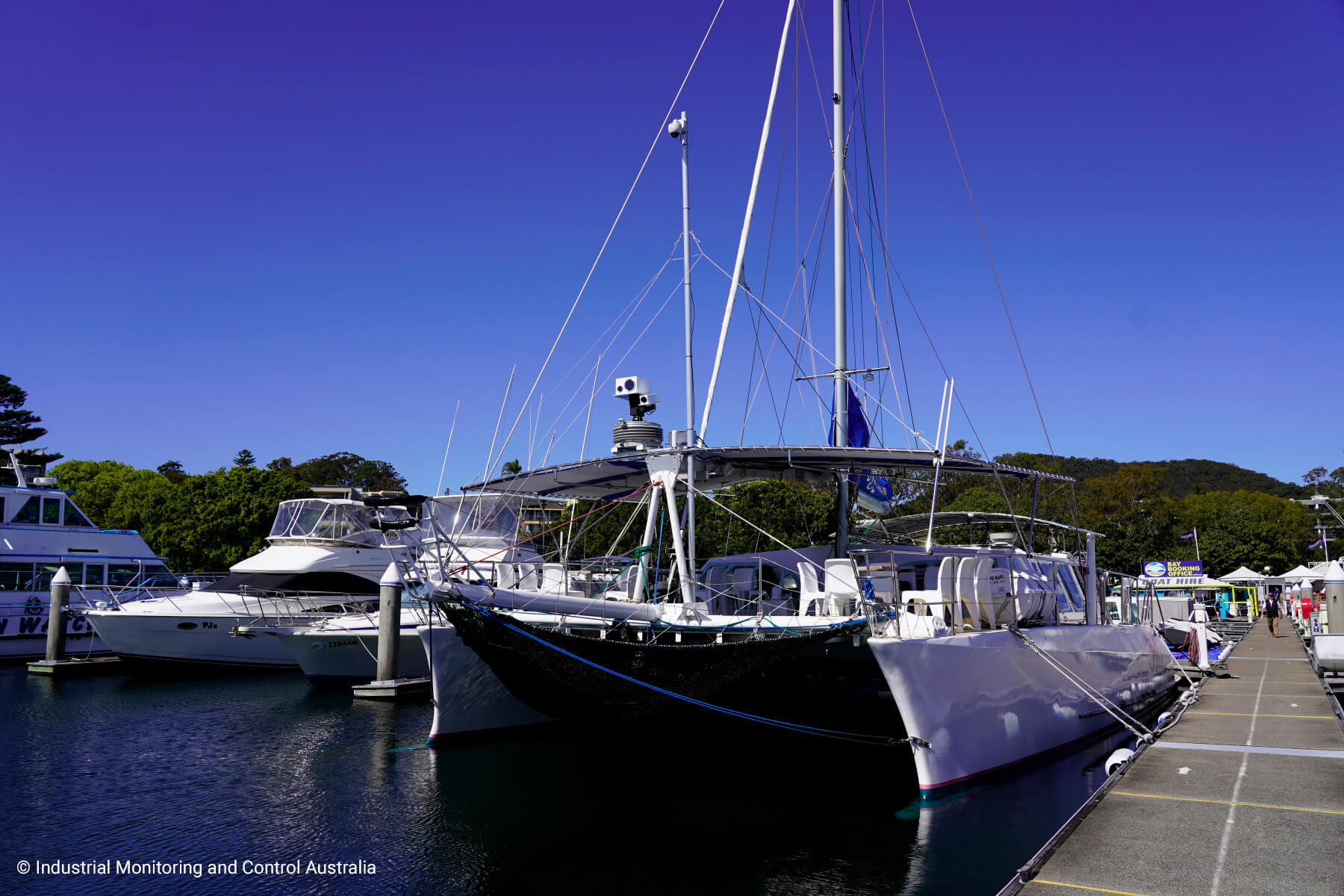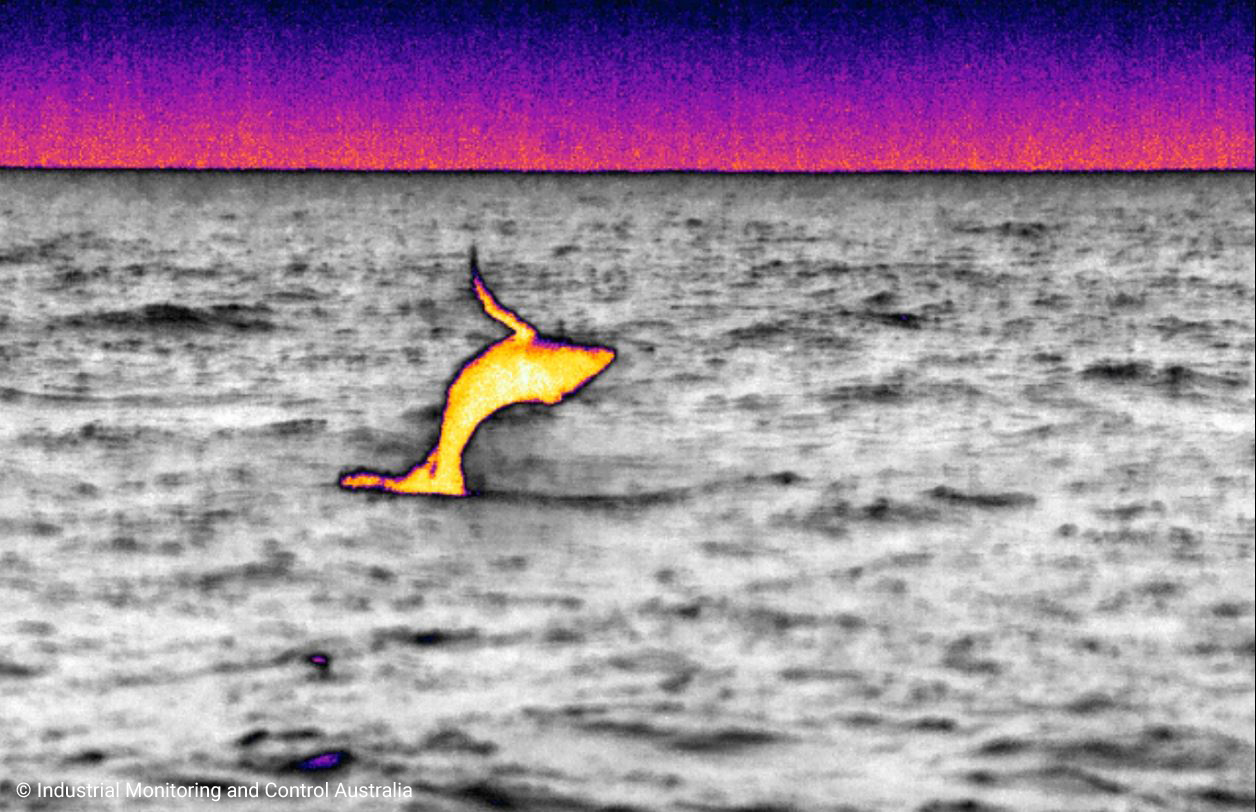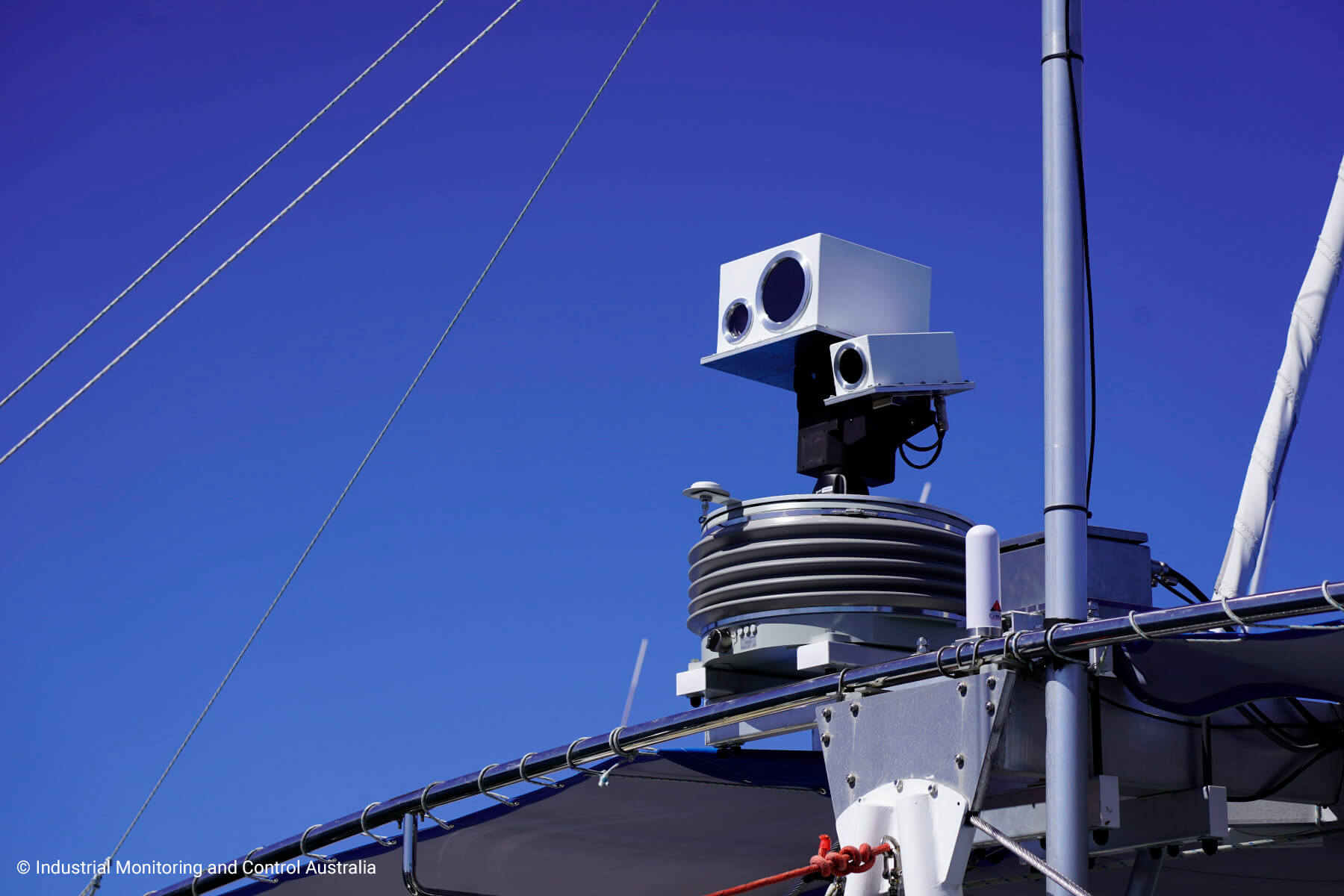Marine Gyro Stabilization Mounts
At sea, pitch and roll movements of boats, ships or USVs caused by the swell present a challenge for data acquisition processes. If sensors are mounted without stabilization, they are exposed to the movements of the vessel, which results in numerous sources of error. SOMAG AG Jena’s marine Mount portfolio was specifically designed for marine applications to precisely stabilize sensors in extremely harsh environments. The design of the units allows the adaption of a wide range of cameras and scanners, making the devices very versatile for various applications, such as surveillance tasks for which gyro stabilization makes a noticeable difference.
Electro-Optical/Infra-Red systems are usually used for this purpose, as they provide both visible and infrared wavelengths for environmental perception by day and night and under low-light conditions. Image stabilization is of crucial importance here, since EO/IR systems must be able to detect moving objects from a distance and under rough maritime conditions.
With high-quality materials and an IP 67 class shell the Mounts are made to last. The Mounts are salt- and splash-water resistant and have an extremely rugged housing. Rough maritime environments set no limits to their functionality and performance. They feature an electromechanical or hydraulic gimbal system and compensate roll and pitch up to ≤±20.0° and stabilize payloads between 15 kg and 160 kg. This makes SOMAG’s Mounts the first choice as gimbals for surveillance applications at sea. Their usage is not limited to any specific type of vessel. The stabilization platforms can also be installed on (floating) platforms. SOMAG marine Mounts are compatible with:
- Electro-Optical / Infra-Red imaging systems
- 360° / Panoramic detection cameras
- Pan-, Tilt-, Zoom cameras
- LiDAR systems
- Video cameras
- Radar systems
- Hyperspectral imaging systems
- any other sensor possible…
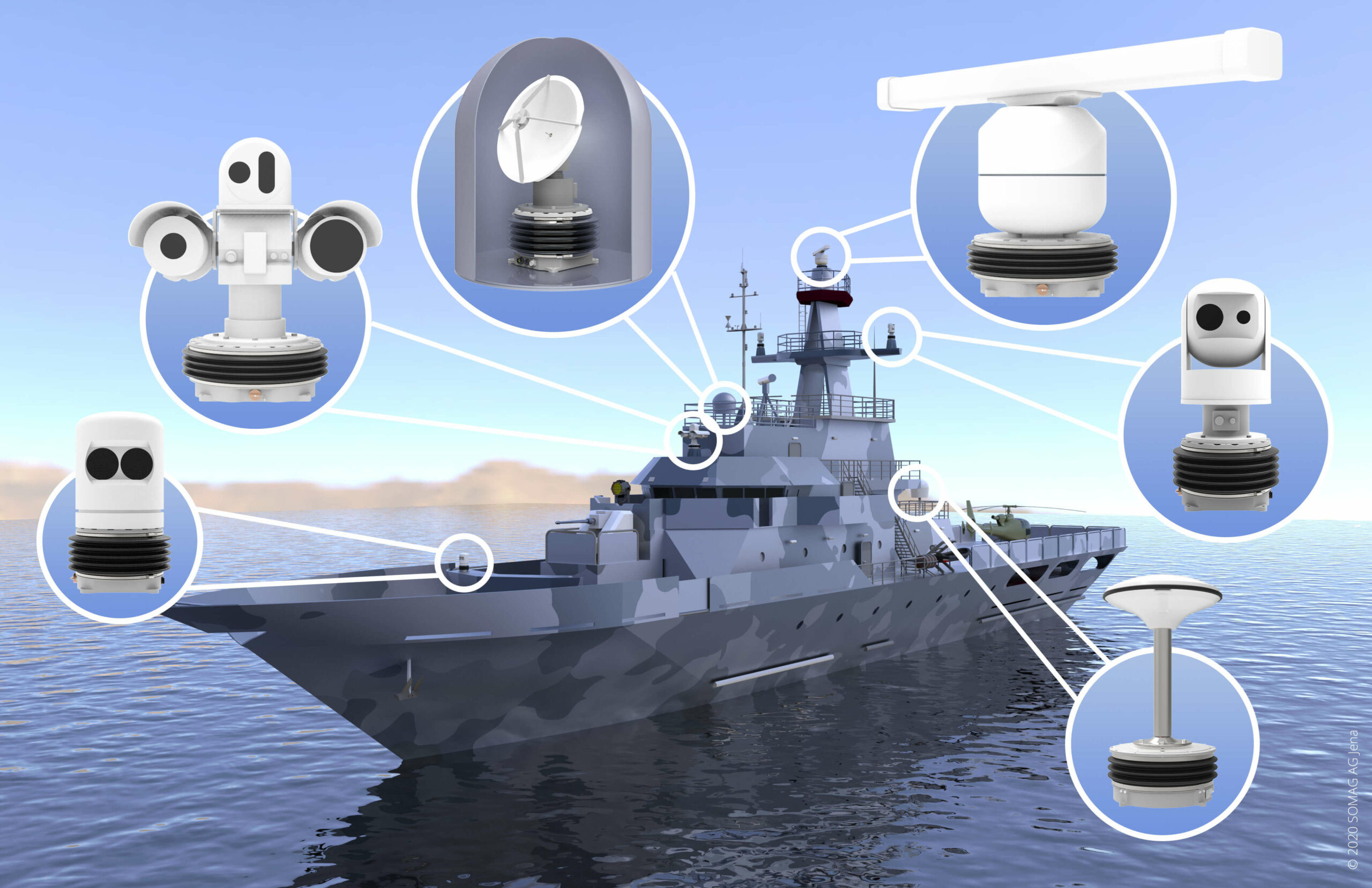
© SOMAG AG Jena
RSM 400
The RSM 400 is specifically designed for marine applications to ensure perfectly stabilized data capturing of sensor systems in rough environments. The ruggedized Mount is used by a customer in combination with a high resolution panoramic thermal camera on an Unmanned Surface Vessel. The Mount compensates roll and pitch movement of the USV caused by vessel motions in the swell. The installed 360°-sensor is located in an elevated mast position. They Mount ensures a stabilized field of view of the panoramic environment. In this example, the Gyro Mount is part of the collision avoidance system that allows the USV to detect and avoid obstacles at an early stage during unmanned missions.
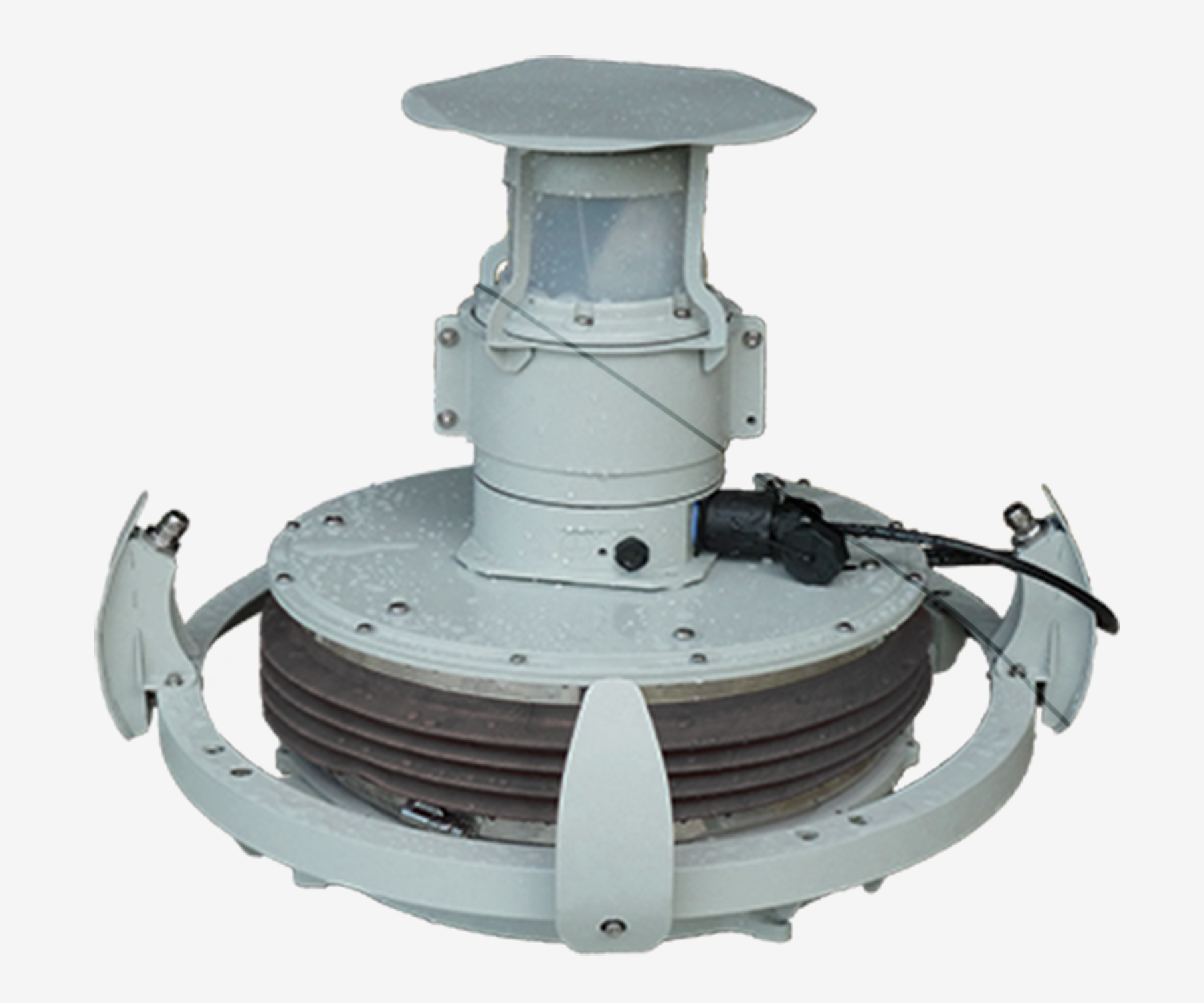
RSM 400 in Field
Coastline view through stabilized PTZ camera
SOMAG Mounts can be deployed on boats and ships as well as buoys and floating supports. The following video shows an application where a customer in Southeast Asia has deployed a marine Mount on a buoy. The Mount stabilizes a PTZ camera that records the coastline. On the left side of the screen it is clearly visible how parts of the buoy follow the water movements swinging from left to right and back, whereas the horizon with the ships stays almost perfectly horizontal thanks to the Gyro Mount.
Thermal imaging camera on OSM 4000
The Australian company IMC offers design, supply and system integration services for video and noncontact detection, testing and measurement systems. Thy specialise in industrial monitoring and control systems for process automation and security purposes. The company is active in a broad range of activities, including environmental projects. For recent sea trials in this area, our OSM 4000 was the gimbal of choice. The mount stabilised a thermal imaging camera installed on a catamaran and neutralised the dynamic movements of the sea. During the tests, great thermal video footage of a baby whale was obtained.

